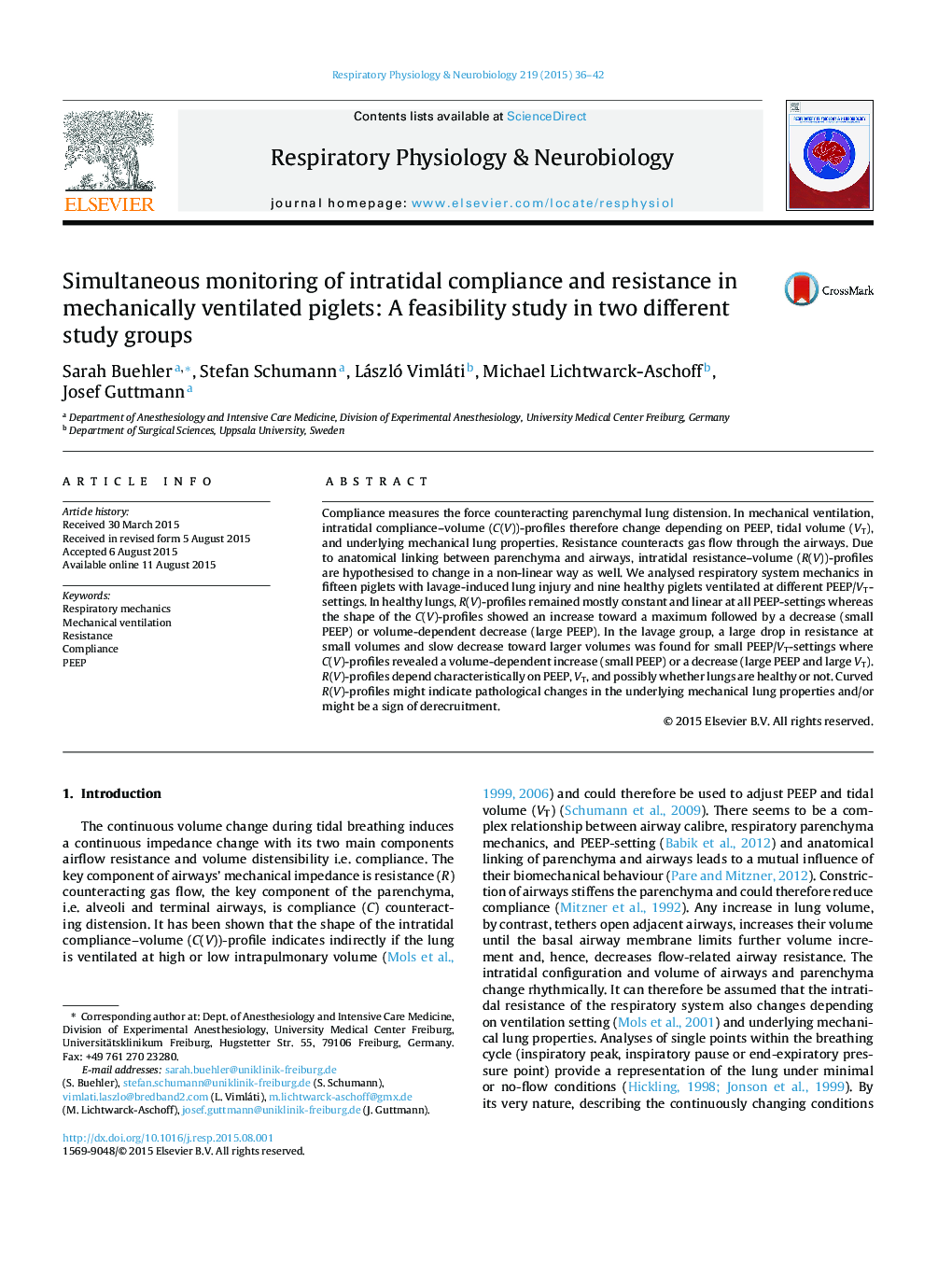| Article ID | Journal | Published Year | Pages | File Type |
|---|---|---|---|---|
| 2846786 | Respiratory Physiology & Neurobiology | 2015 | 7 Pages |
•Intratidal resistance–volume profiles change in a characteristic way depending on PEEP, tidal volume and the underlying mechanical properties of the lung.•In healthy lungs, intratidal resistance–volume profiles decline linearly.•A curved intratidal resistance decline might indicate pathological changes in the underlying mechanical lung properties.•Intratidal resistance–volume profiles might help guiding a lung protective ventilation setting.
Compliance measures the force counteracting parenchymal lung distension. In mechanical ventilation, intratidal compliance–volume (C(V))-profiles therefore change depending on PEEP, tidal volume (VT), and underlying mechanical lung properties. Resistance counteracts gas flow through the airways. Due to anatomical linking between parenchyma and airways, intratidal resistance–volume (R(V))-profiles are hypothesised to change in a non-linear way as well. We analysed respiratory system mechanics in fifteen piglets with lavage-induced lung injury and nine healthy piglets ventilated at different PEEP/VT-settings. In healthy lungs, R(V)-profiles remained mostly constant and linear at all PEEP-settings whereas the shape of the C(V)-profiles showed an increase toward a maximum followed by a decrease (small PEEP) or volume-dependent decrease (large PEEP). In the lavage group, a large drop in resistance at small volumes and slow decrease toward larger volumes was found for small PEEP/VT-settings where C(V)-profiles revealed a volume-dependent increase (small PEEP) or a decrease (large PEEP and large VT). R(V)-profiles depend characteristically on PEEP, VT, and possibly whether lungs are healthy or not. Curved R(V)-profiles might indicate pathological changes in the underlying mechanical lung properties and/or might be a sign of derecruitment.
